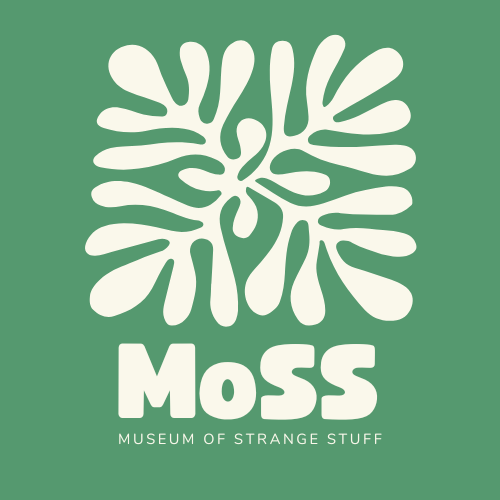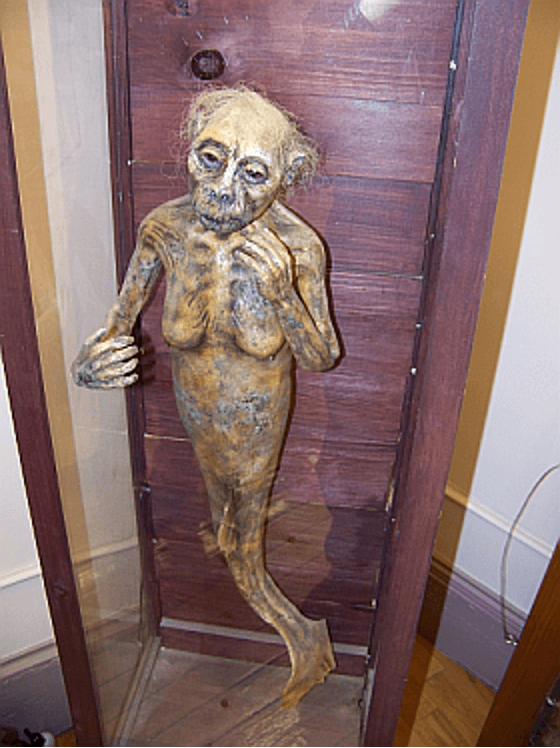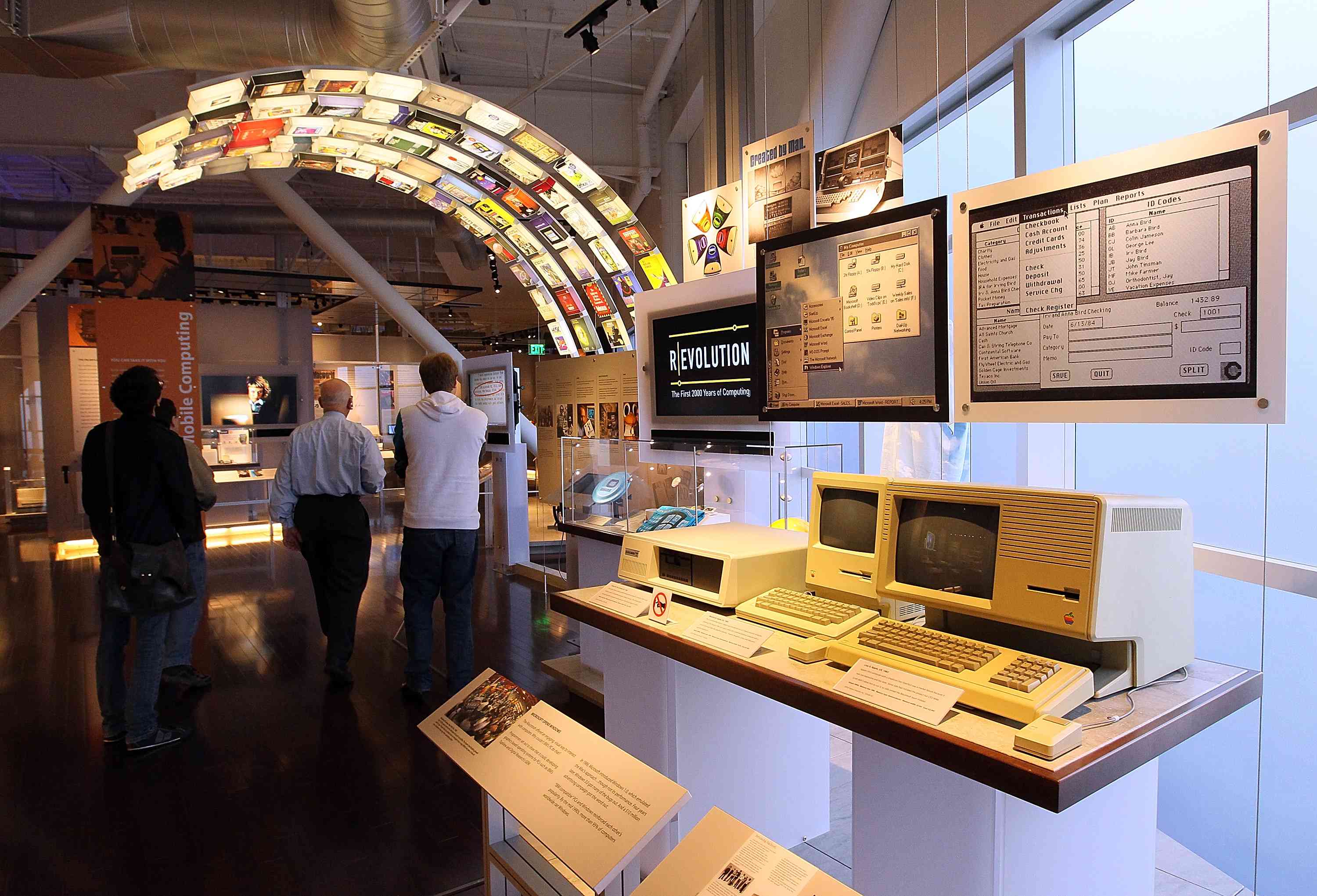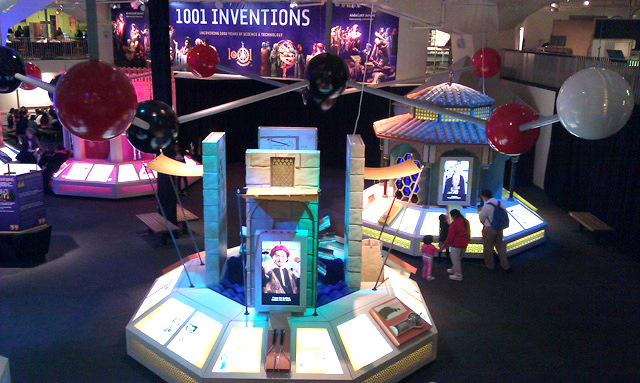

Join us for a limited-time experience featuring some of the world’s most notorious cryptids! Dive into the mysteries of creatures like Bigfoot, the Chupacabra, and the Loch Ness Monster. This special exhibit brings together rare artifacts, plaster “footprint” casts, and supposed evidence from cryptid sightings throughout history. You’ll explore famous encounters, alleged eyewitness accounts, and even step into a mock forest at dusk, where you might just feel Bigfoot watching…
Special Event: Cryptid Q&A with Experts
For one night only, cryptozoologists and folklore experts will be hosting a Q&A session to discuss their research, theories, and the tantalizing evidence that keeps cryptid lore alive. Visitors can ask questions, share their own theories, and even submit sightings to our “Cryptid Evidence Wall.”
Exhibited November 1st - December 15th 2024

Step into “Ghosts in the Machine,” an eerie journey through the forgotten and haunted technologies of the past. This dimly lit exhibit features a collection of devices that seem to carry a life—or perhaps a spirit—of their own. Visitors are invited to explore everything from vintage typewriters that occasionally produce random phrases on their own, to a collection of antique radios that sometimes play ghostly music or unsettling snippets of forgotten broadcasts.
Among the highlights is the “Talking Box,” an early model of a phonograph rumored to play voices even without a record loaded. Visitors have reported hearing faint whispers and distant laughter, though whether it's just the creaks of old machinery or something otherworldly remains a mystery. Nearby, an old reel-to-reel tape recorder plays back strange echoes when visitors approach, offering the brave a chance to leave their own message and see what echoes back.
Perhaps the strangest item in the exhibit is the "Edison Spirit Radio," a recreation of a device said to have been used by Thomas Edison in his alleged experiments to communicate with the dead. The radio, housed in a dark corner, emits faint static and an occasional chilling melody that visitors claim changes each time they listen. This one-of-a-kind exhibit combines a love of history and mystery, inviting guests to question where the line between machine and spirit really lies. Are these objects haunted, or simply misunderstood relics? The answer is up to you to decide.

Discover the strange side of everyday objects in the “Museum of the Mundane,” a playful yet thought-provoking exhibit that shines a light on the quirky, awkward, and downright bizarre items from daily life over the years. From peculiar beauty products with questionable ingredients to household gadgets that look more dangerous than useful, this exhibit invites visitors to see familiar things in a whole new way.
One display, “Dangerous Fashions,” showcases clothing items from the past that didn’t quite hit the mark—think lead makeup kits, corsets with impossibly tight laces, and crumbling old raincoats coated with once-popular but toxic chemicals. Each piece reveals both the strange trends of its time and the surprising risks people took to keep up with fashion.
The exhibit also features an assortment of odd kitchen gadgets with puzzling designs, like the vintage “Egg Slicer Deluxe,” a device with more sharp edges than an egg could possibly require, and a mid-century “Salad Shooter” that looks more like a medieval weapon than a cooking tool. And then there are the mundane items that just missed the mark entirely, like the “inverted flashlight” (which lights up everywhere but the spot it’s pointing at) and “waterproof” umbrellas that never lived up to their name.
“Museum of the Mundane” lets visitors chuckle, gasp, and marvel at how bizarre everyday life can be when viewed through the lens of history. This exhibit is a celebration of human creativity, reminding us that even the simplest objects have a story—and sometimes, that story is stranger than fiction.

Enter “Artifacts of the Unexplained,” an exhibit devoted to the puzzling, the eerie, and the truly inexplicable. Each item in this collection defies logic, challenging visitors to question what they know about reality. From objects with origins lost to history to pieces that seem to carry strange energies, these artifacts invite you to unlock mysteries that go far beyond simple explanations.
One of the most talked-about pieces in the collection is the “Compass of the Wandering North.” This antique compass points north—but only some of the time. Other times, its needle swings erratically, supposedly following the magnetic pull of something unknown. Positioned alongside it is a “Cursed Ring,” a beautiful but eerie relic with an unsettling backstory. Passed down through generations, this ring is rumored to bring a streak of bad luck to anyone who wears it, a tale allegedly confirmed by several previous owners who faced mysterious misfortune.
Then there are the “Whispering Stones,” a set of ancient stones covered in undecipherable symbols. Experts have been unable to identify the language, and visitors have reported hearing faint whispers or feeling chills when standing close to them. To this day, their origin and meaning remain a mystery. “Artifacts of the Unexplained” leaves room for endless interpretation, inviting visitors to ponder whether these items are simply misunderstood relics or evidence of something supernatural. Are they products of lost knowledge, ancient rituals, or perhaps forces beyond our understanding? Only the bravest will dare to decide.

Welcome to “The Impossible Library,” a collection of books that challenge our perception of what a book should be. Here, you’ll find volumes that can’t be read, stories that seem to lack a beginning or an end, and tomes filled with symbols from languages that defy translation. Each book is a riddle, a mystery waiting to be solved, and an invitation to explore the limits of human understanding.
One of the library’s most intriguing pieces is the Codex of Shadows, a thick, leather-bound book filled with sketches of plants, animals, and strange machines. Although the ink appears black, it fades and changes color when observed in different light, giving the impression that the illustrations move. Historians believe it may have belonged to an ancient alchemist, yet no one has been able to decipher its coded text.
Another peculiar work is the Endless Novel, an 800-page book with no title, no author, and seemingly no conclusion. Each chapter feels like the start of a new story, with characters and events that change without warning. Every visitor who reads it claims to have found a different story, leading many to believe the book may somehow “choose” its tale based on the reader.
Finally, visitors will encounter the Atlas of the Unknown, a crumbling map book with pages that sometimes appear blank and other times covered in faded landscapes. As you turn the pages, ghostly maps of undiscovered territories emerge, only to vanish minutes later. Scholars have found no record of these lands, sparking endless debates about whether they ever existed or might belong to another realm.

Step into the “Cabinet of Lost Inventions,” a tribute to the quirky and unconventional inventions that didn’t quite stand the test of time. Here, you’ll find a collection of fascinating prototypes, peculiar gadgets, and abandoned creations from inventors who dared to think differently. Each invention tells the story of a creative mind ahead of—or maybe just slightly out of sync with—its time.
One of the highlights is the Electric Walking Stick, a cane equipped with a built-in flashlight and radio tuner from the 1920s. Although the concept was innovative, this gadget proved too heavy and unreliable for everyday use. Visitors can try lifting it and imagine the courage it took to haul this “portable technology” around in its day.
Then there’s the Mechanical Clothes Folder, a contraption that promised to automate laundry day in the early 1900s. Resembling a combination of gears and paddles, the machine requires cranking for each piece of clothing, making the folding process longer than just doing it by hand. Next to it is the Multi-Function Hat, a wide-brimmed hat from the 1950s with a built-in mirror, match compartment, and toothpick holder—perfect for the dapper but overly prepared gentleman.
The exhibit also features the Illuminated Tea Set, a collection of teacups that glow when filled with liquid. Although visually enchanting, the delicate glassware proved impractical for daily use. In the “Cabinet of Lost Inventions,” each object celebrates the inventiveness of the human spirit, reminding us that even the most unusual ideas can leave their mark on history, regardless of their practicality.
